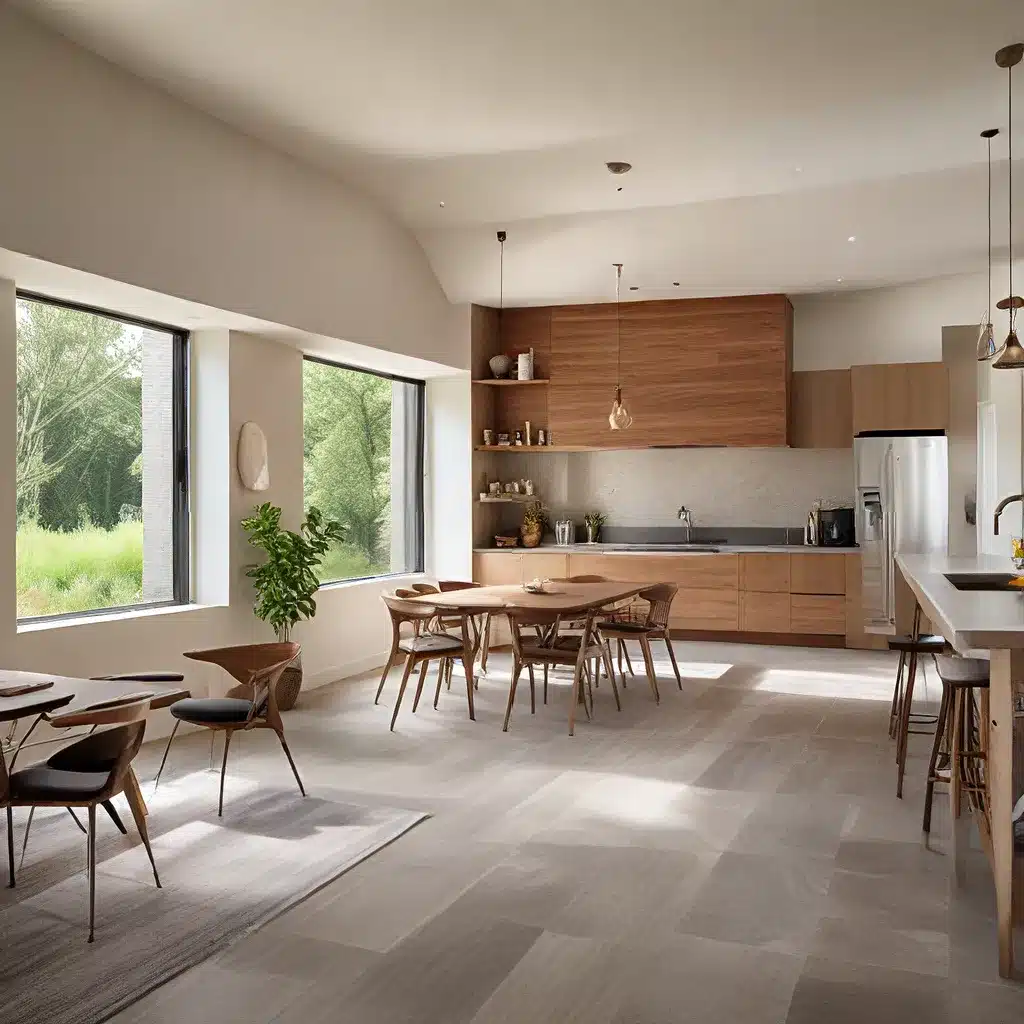
In a world where we spend the majority of our time indoors, the importance of wellness-focused interior design has become increasingly evident. As our physical and emotional health are intrinsically linked to the spaces we inhabit, designing homes that promote wellbeing is no longer just a luxury, but a necessity.
The Rise of Wellness-Centric Design
The wellness movement has gained significant momentum in recent years, with more and more people seeking to integrate holistic practices into their daily lives. This shift has naturally extended to the realm of interior design, as architects and designers recognize the profound impact that our living and working environments can have on our overall health and happiness.
Studies in fields like environmental psychology and neuroaesthetics have shed light on the intricate relationship between our physical spaces, our senses, and our emotional and psychological well-being. By understanding these connections, designers can create environments that actively nurture our minds and bodies, rather than merely focusing on aesthetics or functionality.
Wellness-Centric Design Principles
So, what are the key principles that define wellness-centric interior design? Let’s explore some of the most impactful strategies:
1. Embracing Natural Elements
Incorporating greenery into our living spaces is a simple yet powerful way to boost our wellbeing. Plants have been shown to improve air quality, regulate humidity, and even reduce stress levels and improve concentration. From lush foliage to potted herbs, strategically placed flora can transform a space into a natural oasis.
Careful consideration of lighting is another crucial aspect of wellness-focused design. Maximizing natural daylight and incorporating smart lighting systems that mimic our circadian rhythms can have a profound impact on our physical and emotional well-being.
2. Cultivating Sensory Experiences
Our senses play a vital role in shaping our experiences within a space. Carefully curated scents, such as those from essential oil diffusers, can evoke powerful emotional responses and promote relaxation or invigoration, depending on the desired effect.
Tactile experiences are equally important, with the use of plush, natural fabrics and varied textures encouraging a sense of comfort and coziness. By appealing to our senses, designers can create environments that are not only visually appealing but also deeply soothing and rejuvenating.
3. Promoting Mindfulness and Relaxation
One of the hallmarks of wellness-centric design is the inclusion of dedicated spaces for mindfulness and relaxation. Whether it’s a cozy reading nook, a serene meditation corner, or a luxurious bathing sanctuary, these areas serve as havens for respite and rejuvenation, allowing occupants to truly unwind and recharge.
Prioritizing ergonomic furniture and high-quality bedding and mattresses is also crucial, as comfort and support are essential for both physical and mental well-being.
4. Minimizing Clutter and Toxins
In today’s fast-paced world, minimalism and decluttering have emerged as powerful tools for cultivating a sense of calm and clarity. By streamlining our living spaces and eliminating unnecessary distractions, we can create an environment that is conducive to focus, relaxation, and overall wellbeing.
Additionally, minimizing the presence of toxic materials and volatile organic compounds (VOCs) in our homes is crucial for maintaining a healthy indoor environment. Designers may opt for natural, non-toxic finishes and furnishings to ensure that our living spaces are free from potentially harmful substances.
Integrating Wellness into Your Home
Implementing wellness-focused design in your own home doesn’t have to be an overwhelming task. Start by incorporating small, impactful changes that align with your personal needs and preferences.
Consider adding lush houseplants to your living room, installing a humidifier in your bedroom, or creating a dedicated meditation nook in a quiet corner. Experiment with essential oil diffusers and natural lighting to enhance the ambiance and elevate your overall sense of wellbeing.
When it comes to furnishings and decor, prioritize comfort and quality over purely aesthetic considerations. Invest in a high-quality mattress and bedding, and choose ergonomic seating that supports your posture and reduces strain.
Lastly, don’t underestimate the power of personalization. Surround yourself with objects, artwork, and accessories that hold personal meaning and evoke positive emotions. These individualized touches can transform a house into a true haven that nourishes your mind, body, and spirit.
Elevating Your Home with Professional Design
While DIY wellness-focused design is certainly achievable, working with a professional interior designer can elevate your home to new levels of comfort and relaxation. These experts possess the knowledge, experience, and creativity to craft personalized solutions that seamlessly integrate wellness principles into your living spaces.
Interior designers can help you navigate the nuances of color theory, lighting, texture, and space planning to create an environment that is not only visually stunning but also deeply restorative. They can source high-quality, non-toxic materials and furnishings that align with your wellness goals, ensuring that your home becomes a sanctuary for holistic living.
Moreover, professional designers can provide valuable insights into the latest wellness-focused design trends and innovations, empowering you to stay ahead of the curve and create a home that truly reflects your commitment to personal well-being.
Conclusion
As we spend more time in our homes, the importance of wellness-centric interior design has never been more apparent. By embracing the principles of natural elements, sensory experiences, mindfulness, and minimalism, we can transform our living spaces into havens of rejuvenation and balance.
Whether you choose to embark on a DIY wellness-focused project or collaborate with a professional interior designer, the rewards of a healthier, more harmonious home are well worth the investment. So, let’s elevate our living experiences and cultivate spaces that nourish our minds, bodies, and souls.

